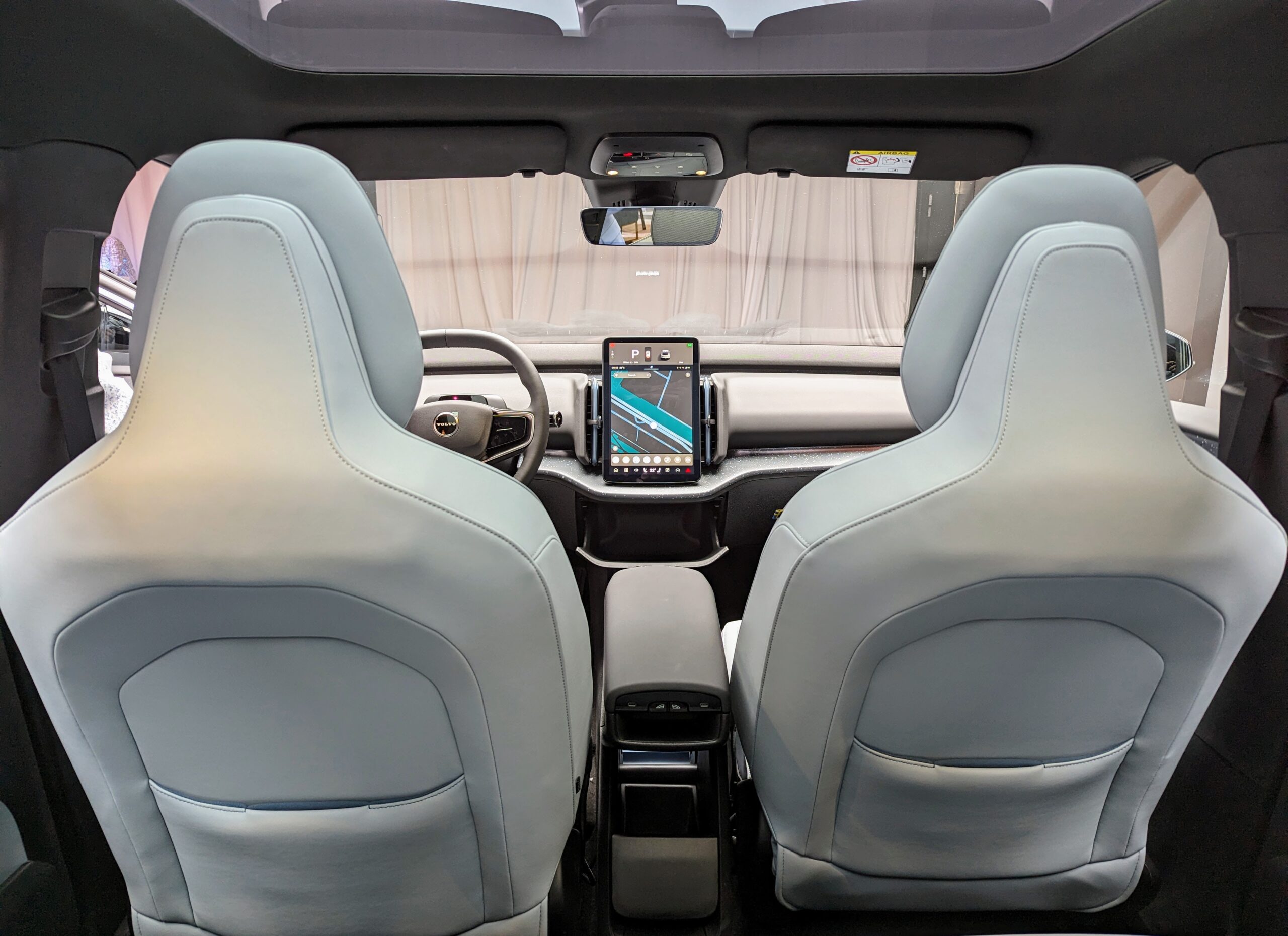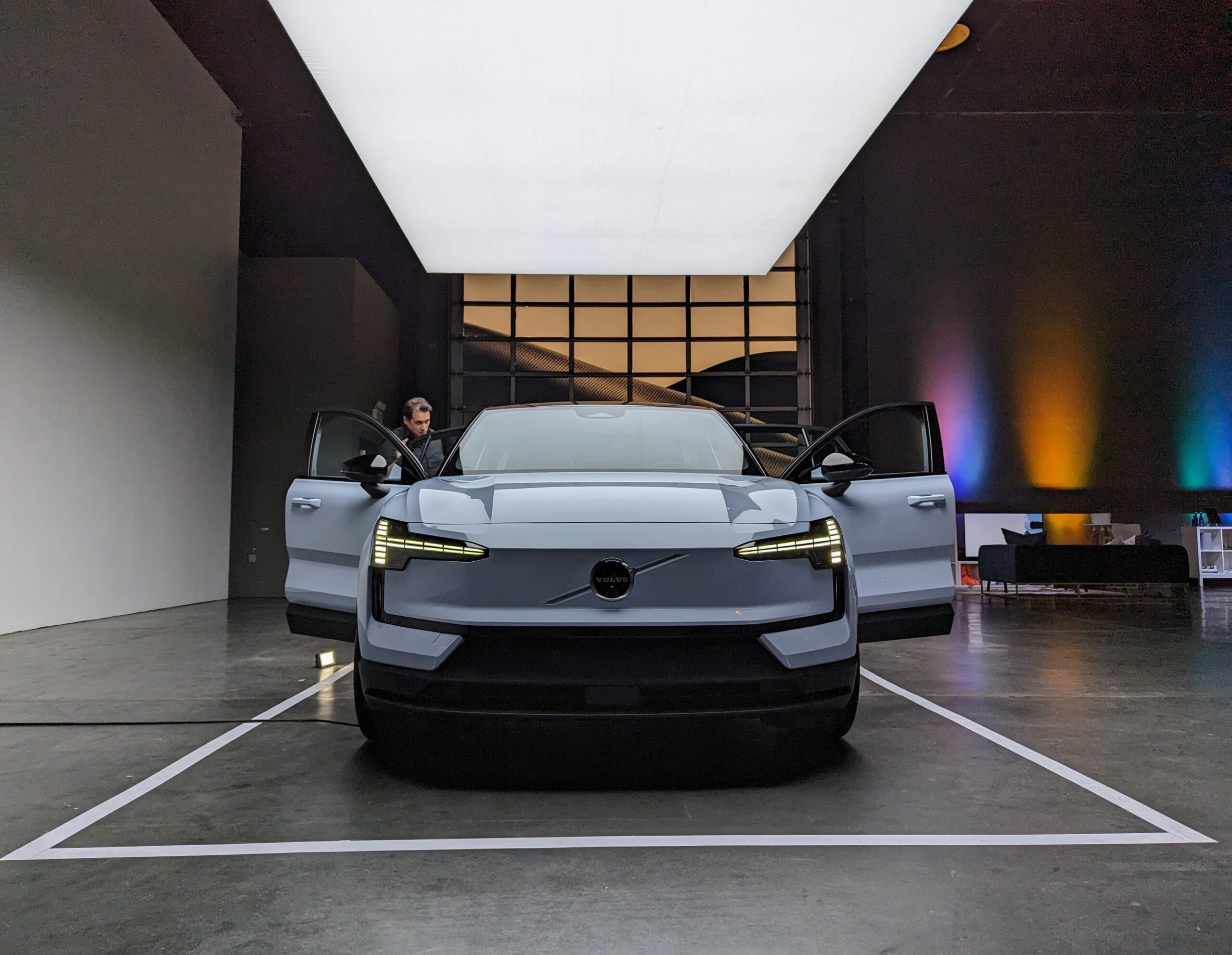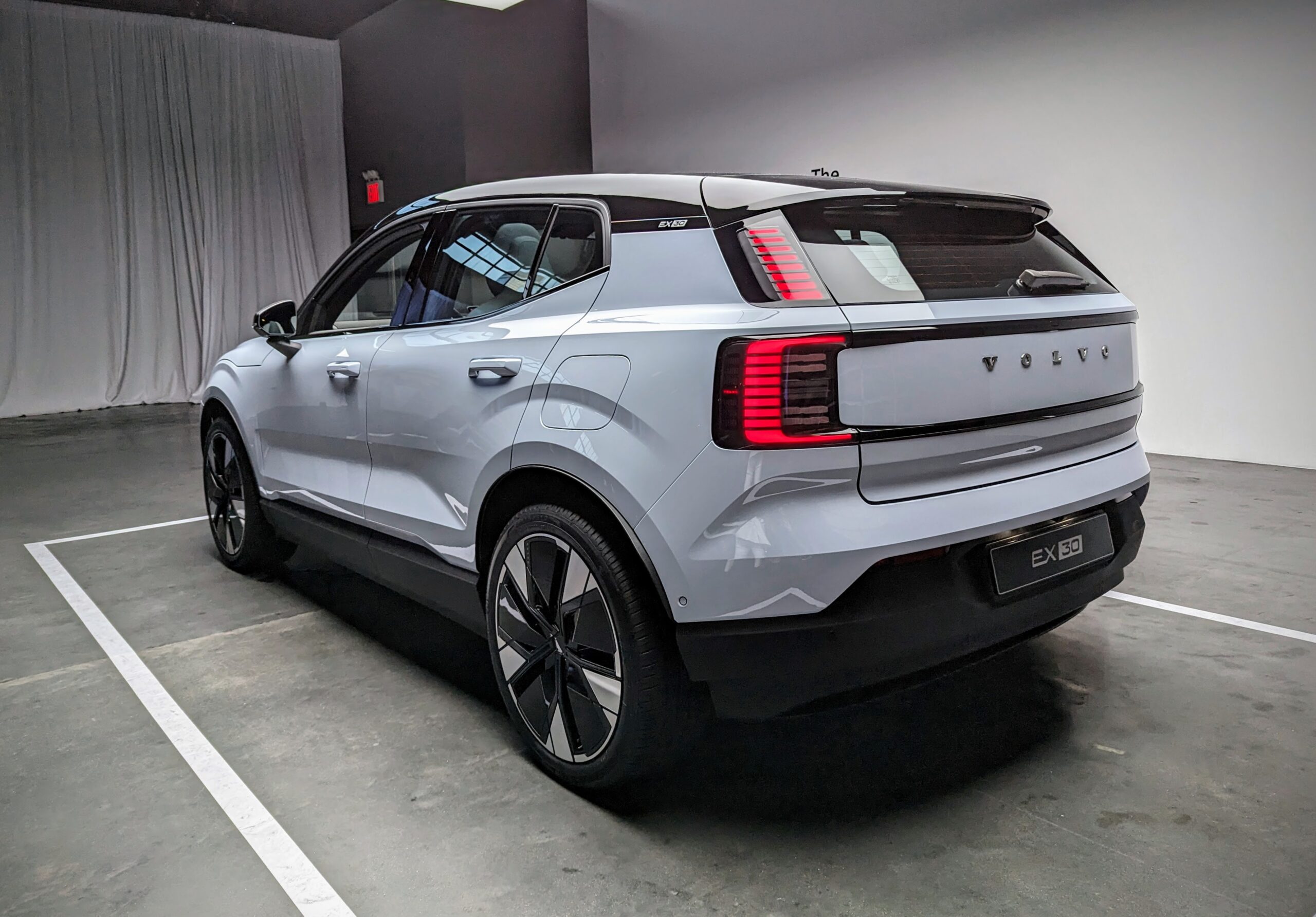
The Volvo EX30 took the world by storm, simultaneously taking the crown as the most affordable Volvo, the smallest Volvo ever, and the fastest Volvo.
As a subcompact hatchback, it is purpose built to assault European and Asian markets with their preference for smaller vehicles that are well suited by buyers in high-density cities. In North America, customers have grown to prefer larger SUVs — though, there is definitely a spot in the market for smaller, more affordable electric vehicles, especially in the hot hatch format.
Volvo invited us out to New York to see the EX30 in person at its North American debut, and right out of the gate, the Volvo EX30 was larger in person than it looked online. Yes, Volvo has been making fun of its diminutive stature with comments about it being tiny, even laughing at the company’s own “small” reveal, but we were pleasantly surprised. It should easily fit into the North American market, slotting in alongside the other subcompact electric vehicles on the market today like the Chevy Bolt, Bolt EUV, and Kona Electric.
Optimizing the size of vehicles for the actual use case helps reduce the emissions needed to produce the vehicle and also the cost. The EX30 will start at $34,950 for the rear-wheel drive version in the US and should be similarly priced in Mexico as well, according to Volvo’s experts at the event.

The EX30 boasts the clean lines of Scandinavian design in a more compact package. Image credit: Kyle Field, CleanTechnica
The Volvo EX30 adds a completely new segment to Volvo’s lineup and opens up the brand to even more customers in Asia, Europe, and North America. That’s exciting for Volvo and offers a more affordable vehicle for even younger buyers to get into the brand.
The EX30 will also be offered in an all-wheel drive configuration that boasts a staggering 0–60 mph time of 3.4 seconds. That’s noticeable, as it’s faster than Tesla’s Model Y Performance build, which hits the mark in 3.5 seconds.
Volvo might have designed a smaller vehicle, but it’s big on features and specs. Both configurations of the Volvo EX30 boast a 69 kilowatt-hour battery that supports 275 miles of range per charge. That’s a very respectable range, especially at such an affordable price that is sure to attract attention from customers.
The elephant in the room with the EX30 is the poor state of DC public fast charging in the US. The continuing ineptitude of Electrify America coupled with automaker’s decisions to give away a few years of free charging with many new vehicles has hobbled the already diminutive fast-charging network.
Volvo confirmed to us at the event that the EX30 will come equipped with a CCS1 receptacle in 2024 with an adapter to use Tesla’s NACS chargers in the same calendar year. In 2025, Volvo will transition its vehicles to natively use the NACS standard. The vehicle at the launch event was the European spec, with a Mennekes AC charging port and CCS2 for DC fast charging.
After seeing the EX30 in person, it feels like a solid win for the brand, bringing Volvo’s signature Scandinavian design and safety to even more customers around the world. Volvo continues to push the pace on its transition to selling only fully electric vehicles by 2030, and achieving carbon neutrality by 2040.
Introducing right-sized vehicles for even more customer segments allows Volvo to optimize emissions for even more types of customers, growing their bottom line at the same time. They’re also packing in higher mixes of recycled content in the aluminum, steel, and plastic used in their vehicles.
For the full specs on the Volvo EX30, check out our coverage of the initial unveiling in Milan, Italy, a few weeks ago.
Disclaimer: Volvo paid for the author’s travel and accommodations to attend this event.
I don’t like paywalls. You don’t like paywalls. Who likes paywalls? Here at CleanTechnica, we implemented a limited paywall for a while, but it always felt wrong — and it was always tough to decide what we should put behind there. In theory, your most exclusive and best content goes behind a paywall. But then fewer people read it! We just don’t like paywalls, and so we’ve decided to ditch ours. Unfortunately, the media business is still a tough, cut-throat business with tiny margins. It’s a never-ending Olympic challenge to stay above water or even perhaps — gasp — grow. So …






